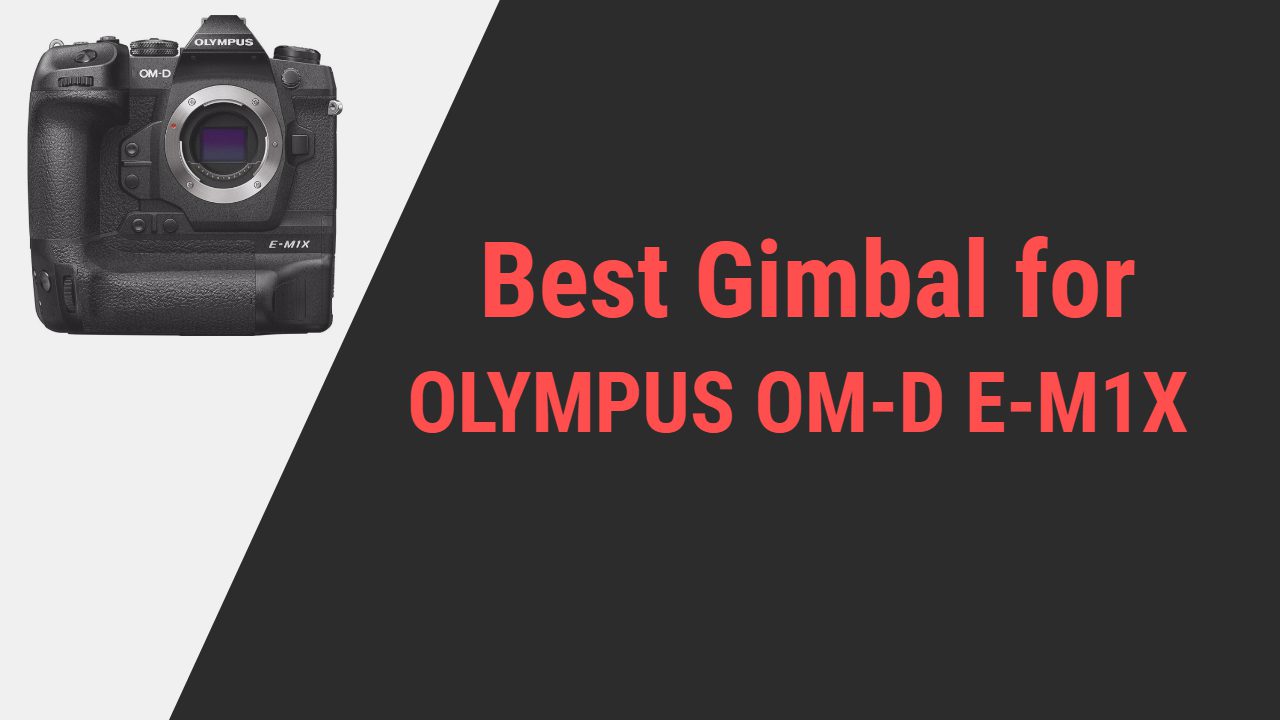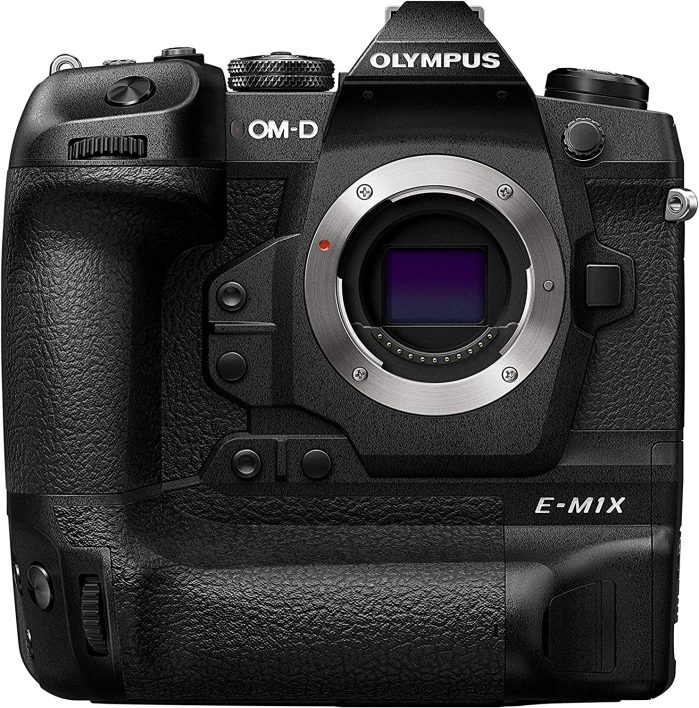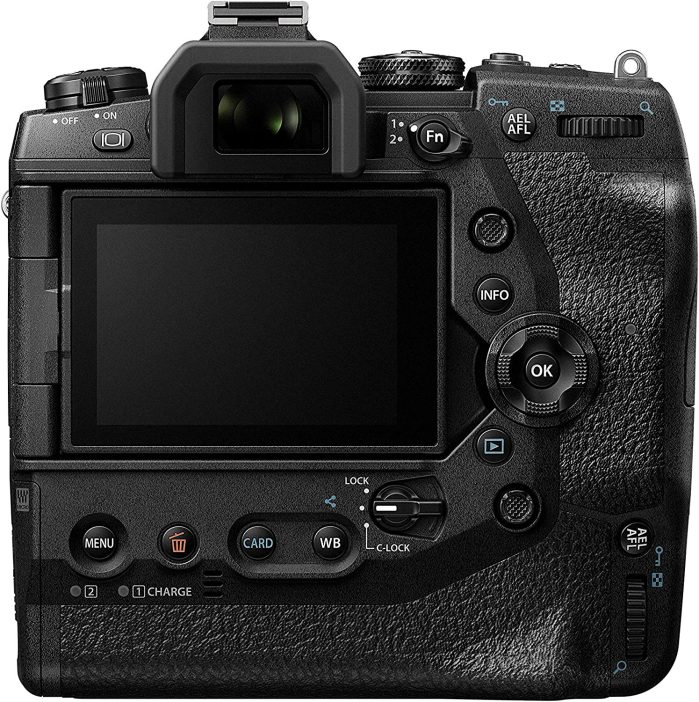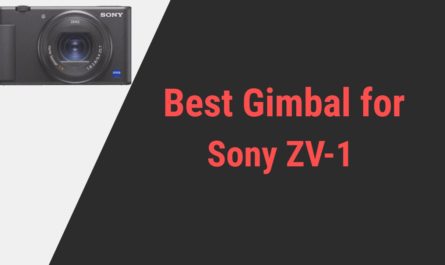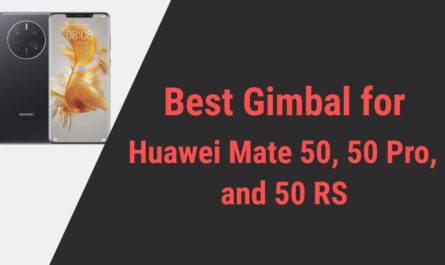Among many camera brands, one brand that you will come across is Olympus. They are widely popular for the performance that they provide. In recent years, gimbals have become an essential tool for photographers and videographers to capture smooth and stable footage.
The Olympus E-M1X is a powerful camera designed for professional photographers who need speed, accuracy, and reliability in their work. When paired with a gimbal, the E-M1X can produce stunning video footage with minimal camera shake.
In this article, we will explore the best gimbals for the Olympus E-M1X. We will review each gimbal’s features, weight capacity, stability, and price point to help you make an informed decision.
So, let’s dive into the world of gimbals and find the perfect one for your Olympus E-M1X! But before we dive into the gimbals, it is necessary that we get to know the camera first.
Olympus E-M1X
- 20.4 megapixel Live MOS sensor
- Micro Four Thirds mount
- Dual TruePic VIII image processors
- 121-point all-cross-type on-chip phase detection AF
- AF sensitivity down to -6 EV
- AF target modes: Single, Group 5-point, Group 9-point, Group 25-point, 121-point, small AF target, AF target selection
- In-body 5-axis image stabilization
- Up to 7.5 stops of compensation when used with select Olympus lenses
- Up to 60 frames per second with AF locked and 18 frames per second with continuous AF/AE tracking
- Buffer depth of up to 103 RAW images or 249 JPEG images
- 4K UHD (3840 x 2160) at up to 30p, Full HD (1920 x 1080) at up to 120p
- The maximum bit rate of 237 Mbps
- All-Intra or Long GOP compression
- OM-Log400 profile for a wide dynamic range
- Dual UHS-II SD card slots
- Weather-sealed body
- Built-in vertical grip for improved handling and controls
- 3.0-inch vari-angle touchscreen LCD
- 2.36 million-dot electronic viewfinder
- Wi-Fi and Bluetooth connectivity
- USB-C charging and power delivery
There is no official support from gimbal manufacturers for the OLYMPUS E-M1X. Some features like capturing photos, focus, and start/stop recording may not work using the gimbal or wireless app so you have to manually adjust all these things from the camera when shooting.
Other than that, all the mentioned gimbals here work perfectly fine and I have personally tested them all with the OLYMPUS E-M1X camera.
| DJI RS 3 (Best Overall)

|
| DJI RS 3 Pro (Most High-end - Highest Payload Capacity & Comes with Advanced Features)
   |
We are sure by now that you know everything you need to know about the camera. We are also sure that you are ready to get to know the different gimbals that you can get for it.
Although it is important to note that all of these gimbals are not fully compatible, it requires some settings here and there to make them compatible. We are here to give you all the information you need on that. So without further ado, let us dive into different gimbals that you can get.
Best Gimbal for Olympus E-M1X Camera
1. DJI RS 3
One name that always pops up while looking for a gimbal is DJI, but before we look into this RS 3 for Olympus E-M1X today, it is necessary that you know it is not fully compatible without some tweaks that you will need to do with it.
To use the DJI RS 3 gimbal with your Olympus E-M1X, you’ll first need to make sure that you have the appropriate mounting plate or adapter. DJI offers a variety of mounting plates and adapters for different camera models, including the Olympus E-M1X.
Once you have the mounting plate or adapter, you can attach the camera to the gimbal and adjust the balance settings as needed.
The DJI RS 3 gimbal features a quick-release system that makes it easy to switch between different cameras, so you can use the gimbal with other cameras in your kit as well.
In addition to that, you will also require a start/stop recording button added to the list of accessories that you need. As you know, the camera is quite unique and requires a little effort.
You will also see that it will totally be worth it when you use RS 3 with your camera; you will be quite happy about the performance that you will get.
The gimbal weighs about 1.5 kg and holds the capacity to hold a payload of about 3 kg, and we are sure that with additional accessories, you can make the best use of it.
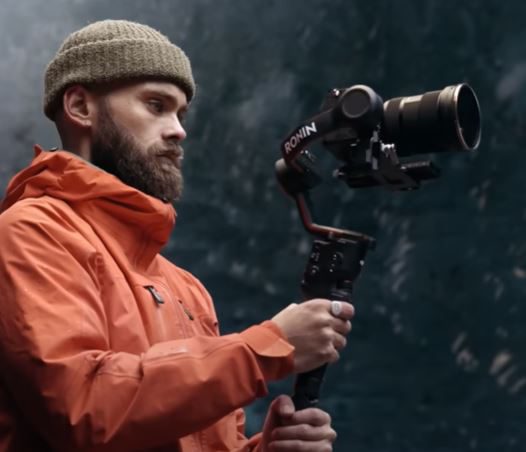

It has 3rd generation RS stabilization algorithm that ensures the utmost stability, and the anti-shake algorithm ensures that you get 20% better performance compared to other gimbals in the same price range.
We have tried this gimbal with the camera, including all the tweaks it requires, and we were elated with how great of the performance we got out of the gimbal.
We are sure that after some of the settings that you can manually adjust, you should be able to make the best out of the gimbal. We will learn more about these settings after we have gone through all of these gimbals, as we have one dedicated section which you can go through to help you with it.
Pros
- Powerful and long-lasting motors
- Impressive stabilization
- Easy to use and control
- 12 hours of battery life
- Great capacity for payload
Cons
- Needs adjustments and an extra button for operating with this camera
- It is expensive
2. DJI RS 3 Pro
We have yet another gimbal that you can get. You can be assured that even though the gimbal is not fully compatible with the camera, there are a few settings and one button you can use to make the gimbal fully compatible.
The DJI RS 3 Pro features a powerful 3-axis stabilization system that works seamlessly with the Olympus E-M1X. This means that you can capture smooth, stable footage even when moving around or shooting in challenging environments.
The DJI RS 3 Pro features intuitive controls that make it easy to adjust settings and customize the stabilization to suit your shooting needs. The controls are well-placed and easy to reach, even in the middle of a shoot.
With up to 12 hours of continuous use on a single charge. This means that you can shoot all day without having to worry about running out of power. You will have to manually adjust some settings on the camera, which you can easily do.
We will teach you the things you must adjust to ensure that your pro-grade camera works well with your gimbal. With an app, you can easily control different modes and settings that you need to do.
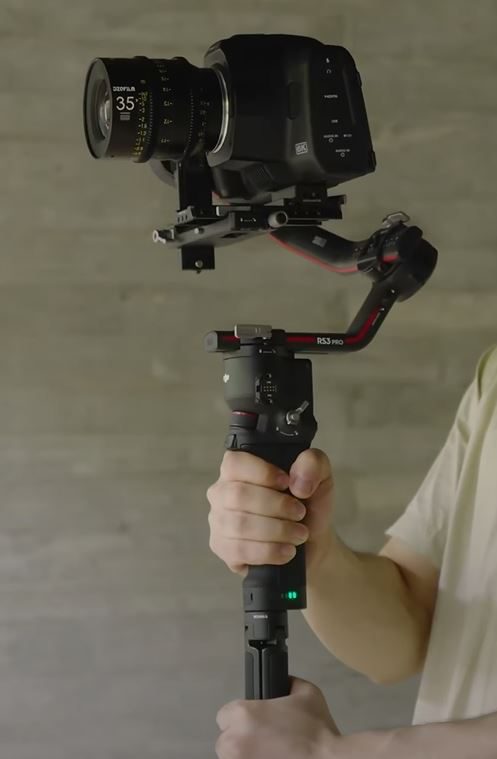

SmoothTrack is a feature that allows you to control the movement of the camera while the stabilizer is active. You can adjust the SmoothTrack settings to control the speed and responsiveness of the stabilizer when you move the camera.
You can also choose whether the stabilizer follows your movements on all three axes or just on one or two axes. The DJI RS 3 Pro can be set to automatically calibrate the stabilizer when it’s turned on.
This ensures that the stabilizer is always properly balanced and ready to use. Although, you will need a recording button that you can connect with Bluetooth and ensure compatibility of the Olympus E-M1X with DJI RS 3 pro.
We will learn more about this recording button and how you can connect it with your gimbal and camera below,
Pros
- Professional grade gimbal
- Impressive stabilization
- Versatile and easy to use
- Easy to control
- Long battery runtime
Cons
- It is expensive
- Requires additional accessory for this camera
You must be wondering if you are spending so much on a gimbal for your camera, what are the advantages you are getting out of it.
Olympus OM-D E-M1X Camera
The Olympus E-M1X is a professional-level mirrorless camera designed for photographers who need speed, reliability, and versatility in their work. This camera features a Micro Four Thirds sensor with 20.4 megapixels, providing excellent image quality and low-light performance.
The camera also has a unique design with a built-in vertical grip that makes it easy to hold and control, especially when shooting in portrait orientation.
One of the most impressive features of the E-M1X is its autofocus system, which uses a combination of phase detection and contrast detection to deliver fast and accurate focus performance.
The camera can track subjects with high precision, making it ideal for sports and wildlife photography. Additionally, the camera’s image stabilization system is one of the best in its class, providing up to 7.5 stops of compensation when using compatible lenses.
The E-M1X also features a weather-sealed body that can withstand harsh conditions, including rain, dust, and freezing temperatures. The camera has a robust construction, which makes it ideal for outdoor and adventure photography.
Other notable features of the E-M1X include its high-speed shooting capabilities, with a continuous shooting speed of up to 18 frames per second with autofocus tracking.
The camera also has a 121-point cross-type autofocus system and a 50-megapixel handheld high-resolution mode. The Olympus E-M1X is a versatile and powerful camera that is perfect for professional photographers who demand the best speed, reliability, and image quality.
While it may not be the most affordable option, its advanced features make it well worth the investment for serious photographers who need a camera that can keep up with their demanding work.
Benefits of using a gimbal
- Stability- The primary advantage of using a gimbal is that it helps to stabilize the camera, ensuring that footage is smooth and steady even when the user is moving, or the environment is bumpy. You will see more about it when you start using a gimbal, and if not, a little further in the article. By stabilizing three axes of movement, a gimbal can create smooth and stable footage that looks professional and is easy to watch. This is particularly useful for video productions such as films, TV shows, and commercials, as well as for vlogs, travel videos, and other types of content that rely on smooth camera movements.
- Flexibility- A gimbal can be used with a variety of cameras, from smartphones to DSLRs, making it a versatile tool for capturing footage. Different gimbals may have different weight and size limits for the cameras they can support, but many models are designed to be adaptable and can work with a range of camera sizes and weights. This flexibility allows users to choose the camera that is best suited to their needs and preferences while still benefiting from the stability and smoothness that a gimbal provides.
- Creativity- A gimbal can enable creative camera movements that would be difficult or impossible to achieve otherwise. For example, it can be used to create smooth, sweeping shots or to follow a subject as they move through a scene. A gimbal can provide greater control and precision over camera movements, enabling users to explore new creative possibilities and capture footage that is smooth, professional-looking, and visually compelling.
- Time-saving- Because a gimbal can stabilize footage, it can reduce the amount of time needed for post-production work, such as stabilizing shaky footage or correcting camera shakes. With a gimbal, users can often capture footage more efficiently than with other stabilization equipment. Because a gimbal provides stable support for the camera, users can often capture footage on the go without having to stop and set up equipment for each shot. This can save time, particularly when filming in fast-paced environments.
- Ease of use– Many gimbals are designed to be easy to use, with intuitive controls that can be learned quickly. Gimbals can be set up quickly and easily without requiring any additional tools or equipment. This means that users can get up and running with their gimbals in no time, allowing them to focus on capturing footage instead of worrying about the technical details of the equipment.
Now that you have learned everything you can about these gimbals, it is time that we bring you an understanding of the different settings that gimbal allows you to do.
What are the different settings in the gimbal that you can do?
Different gimbals may have different settings depending on their make and model, but some common settings include,
Pan– This refers to the left and right movement of the gimbal, which allows you to capture a wide horizontal view.
Tilt– This refers to the up and down movement of the gimbal, which allows you to capture a wide vertical view.
Roll– This refers to the rotation of the gimbal around its axis, which allows you to capture level footage when the camera is mounted on an uneven surface.
Follow mode– In this mode, the gimbal will follow the movements of the operator, keeping the camera pointed in the same direction as the operator moves.
Locked mode– In this mode, the gimbal will lock in place, keeping the camera pointed in the same direction.
Sport mode– This mode is designed for fast-paced movements, such as when filming sports or action scenes, and allows for quick and responsive movements of the gimbal.
Inverted mode– In this mode, the gimbal is flipped upside down, which allows for low-angle shots.
Calibration settings– Depending on the gimbal, there may be various calibration settings that can be adjusted to optimize the performance of the device.
These are just a few of the common settings found on gimbals. The specific settings and features will vary depending on the gimbal, so it’s important to consult the user manual for your specific device to learn more about its settings and functionality.
Final Thoughts
First and foremost, it’s important to select a gimbal that is compatible with the Olympus E-M1X and can support its weight and size.
The gimbal should also have a good range of motion and stabilization features, such as 3-axis stabilization and smooth panning and tilting capabilities. It’s also helpful to look for a gimbal that is easy to use, with intuitive controls and customizable settings.
Other factors to consider when selecting a gimbal include its battery life, portability, and additional features such as object tracking or time-lapse capabilities.
Additionally, it’s important to consider the price and value for money, as gimbals can range widely in price depending on their features and brand.
We have seen all of this compatibility in the gimbals mentioned above, with some tweaks here and there. We are sure you can choose any one of the gimbals mentioned above and will get your best results.

